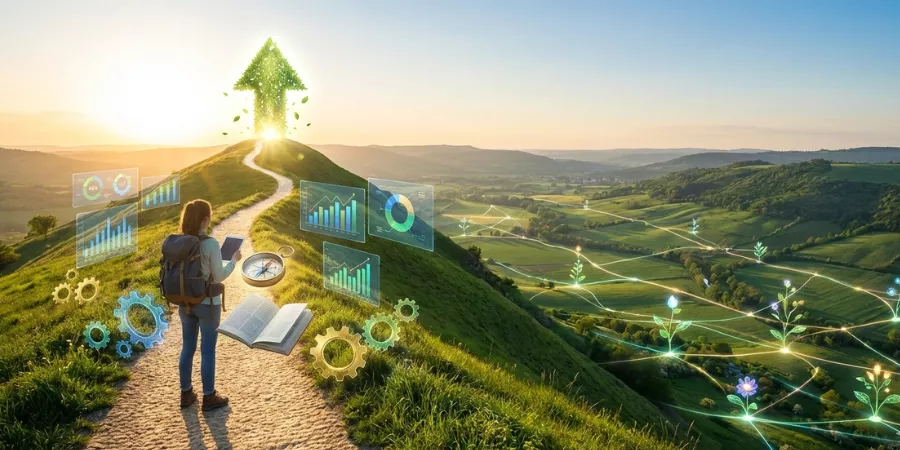The Future of Decentralized Internet and Secure Peer-to-Peer Communication!
There is something electric in how people talk about IP2 Networks today. For some, it represents a loose, renegade streaming culture; for others, it is a highly specialized data-insight tool; and for a visionary few, it is the next generation internet protocol shaping the future of decentralized internet technology. This ambiguity, and the energy behind it, makes IP2 Networks worth decoding.
In this article, we break down what what is IP2 network really means, why different communities care about it deeply, and where it is heading. Many people today explore IP2 Network use cases for businesses, while others view it as part of decentralized internet solutions that enhance privacy and rebuild internet security infrastructure.
In this article, we break down what “IP2 Networ
What is IP2 Network?
Although the internet provides a connection between us, still it is controlled by a handful of major companies and full of dangers. IP2 Network is disrupting this. It provides a peer to peer communication, decentralized method for data sharing and communication, thus granting you power over your information again. IP2 Networks is a provider to be considered if your interest lies in privacy, content creation or running a business that requires having reliable systems built on decentralized networking principles and advanced internet protocols.
The confusing aspect of IP2 Networks is its multiple referential meanings. To be honest, there are three important and different concepts behind the term, and that is why it is often mixed up. These meanings also connect to how IP2 Networks improves online security and how IP2 networks improve performance across different environments.
- A streaming / IRL community
- An IP intelligence databaseused for geolocation, risk analysis, and more
- A futuristic internet infrastructure concept designed for smarter, intelligent network routing
Each of these is real in its own domain, and they are very different from one another. Still, as people increasingly compare the difference between IP2 and traditional IP, the interest grows.
1. The Streaming / IRL Community
Origins and Culture
One of the most visible uses of IP2 Network is as a streamer community. This usage has roots in the fanbase around Ice Poseidon, where “IP2” stood for “Ice Poseidon 2.” Over time, this community evolved into something much broader, a chaotic, decentralized hub for real-life content. Many users today call it a decentralized streaming community because its energy does not depend on a single central platform. As this ecosystem expands, it becomes part of the future of IP2 networking technology.
How It Works
Unlike traditional platforms like Twitch or YouTube, IP2 Networks is not a single site. It is more like an aggregator that tracks live streams across multiple platforms. Viewers can navigate to streamers, see who is live, and engage freely, but it is not centrally governed. This loose structure aligns with peer to peer decentralized routing systems and creates new IP2 network applications in healthcare, education, and entertainment, especially as edge and IoT networking becomes more widespread.
Content Dynamics & Controversies
The content on the IP2 Networks community tends to lean toward raw, unscripted, often risky or controversial real-life content. Because moderation is looser, things can get messy, and sometimes that is exactly what people come to see. While still attracting critics, freedom allowed for scale issues, quality of service (QoS) management, and network visibility and control in such open environments.
2. IP Intelligence & Geolocation
What This Version Means
Another very different meaning of IP2 Networks comes from the domain of IP intelligence. Here, IP2 describes a system or dataset that maps IP addresses to detailed metadata: ISP, ASN, geolocation, connection type, and more. This is utilized by the companies as an IP intelligence database to create trusted relationships, fight against fraud, and personalize user experiences. This is one area where IP geolocation services play an important supporting role.
How It Works Technically
- The IP2 Networkin this sense is maintained through ISP partnerships, automated scanners, and user data that helps improve accuracy. These data points form the backbone of internet security infrastructure used by banks, streaming platforms, SaaS tools, and businesses looking for strong load balancing in IP2 to protect their systems.
- These datasets are distributed through APIs, downloadable libraries, or bulk analytics bundles. Many technology teams adopting AI driven routingor hybrid systems depend on this data. With the rise of privacy focused internet tools, the value of this dataset continues to grow.
Real-World Applications
- This version of IP2 Networksis heavily used by security teams, fraud prevention systems, and marketers.
- A bank may flag a login attempt from a risky region. A streaming service may apply geo-controls.
- Marketing teams may personalize content based on IP geolocation services. As IoT expands and smart cities become data-driven, we also see early benefits of IP2 in smart cities.
3. “Next‑Gen” Networking Infrastructure
The Vision
In a more speculative space, IP2 Networks is also used to describe a futuristic internet infrastructure. Some write-ups propose a protocol marrying AI, decentralized nodes, and encryption. This vision aligns with secure decentralized internet systems that reduce central dependency. It also aligns closely with decentralized networking and the rise of peer to peer communication.
Key Features
According to these concept‑pieces and early coverage:
- AI-Driven Routing: The process is one where AI algorithms do not only analyze real-time network traffic but also select the best path instead of relying on static routing tables.
- Decentralized Node Architecture:IP2 nodes do not rely on one central data store but create a peer-to-peer network grid which hence minimizes the chances of a single point of failure.
- Hybrid Protocol Stack:Includes both IPv4 and IPv6 support as well as possibly quantum-resistant encryption like xChaCha20-Poly1305.
- Scalability & Future-proofing: The system is built to cope with the Internet of Things devices, edge computing as well as high-density network situations.
Challenges & Trade-offs
This vision is, however, powerful and at the same time difficult:
- Compatibility: Cooperation with the old systems dilemma.
- Cost: A decentralized and smart infrastructure will demand a lot financially.
- Complexity: AI models require constant retraining, and decentralized nodes must have consensus mechanisms.
- Risk: Even with embracing by all, some areas of the network could be still left fragmented or underutilized.
Why is IP2 Growing in Attention?
- Decentralization and User Control: Control sits at the center of most IP2 narratives. Many people treat the IP2 Networkidea as a breath of fresh air because it feels more democratic. Some see it through the lens of streamers who operate outside major platforms. Others see it as a way for everyday users to hold their data a little closer without letting tech giants dictate the rules. What this really means is that the appeal is emotional as much as it is technical.
- Demand for Better Security, Scalability, Low Latency: Digital life depends on strong connectivity. People want speed, low latency, resilience, and safety. They want systems that work without friction. End users hold the final say, so cloud providers listen carefully to what they expect. The IP intelligence version of IP2 Networkspeaks to this because it helps organizations make sharper decisions. The infrastructure vision goes a step further and promises the performance backbone that many believe the next era of networking needs.
- Alignment With Web3, Edge, and IoT: One of the most futuristic branches of the IP2 Networkaligns with Web3 principles. The idea is simple. A peer to peer model. A decentralized layout. A cryptographically secure foundation. When you look at smart cities, IoT clusters, and edge computing architecture, you see why this version of IP2 sounds ambitious. It tries to imagine a scaled-up structure that carries the traffic of tomorrow.
Risks, Misconceptions & Criticism
- I2P vs IP2 Confusion: There is a great deal of confusion among the masses regarding I2P (Invisible Internet Project) thinking it to be the same as “IP2 Network.” This is a major confusion. I2P is a proper anonymity network while IP2 is, in most of its definitions, something quite different. The discussions held on Reddit portray this confusion quite evidently: “Can someone explain to me, how IP2 originated (ice poseidon 2) … it all started with ice poseidon.”
- Misuse & Moderation Risk (Streaming Community): In the IRL streaming community, the very freedom that draws people can also result in disorder. If there is no strict supervision, the chances of abuse, torment, or bad conduct are very likely to happen. As the content is uncensored and genuine, it raises larger issues about the liability of the community.
- Technical and Adoption Risk (Infrastructure Version): The infrastructure idea behind the IP2 Network sounds impressive on paper. AI based routing. Decentralized nodes. A self improving network. Engineers still face real-world limitations. Old systems are deeply rooted. New training takes time. Costs rise fast. Interoperability slows teams down. Trust needs to be earned. These hurdles shape how fast or slow the vision can move.
The Future of IP2 Networks
The next five to ten years will be interesting because the IP2 Network sits at the intersection of human behavior, creator culture, and infrastructure innovation. Each version of it is growing at its own pace, yet all of them point toward the same idea. People want digital spaces that feel safer, faster, freer, and less controlled.
Widespread Use of IP Intelligence
Organizations will continue leaning on IP intelligence. Fraud detection. Personalization. Security. These areas depend on good datasets, and the IP2 Network style of intelligence helps companies understand traffic patterns and respond with clarity. It gives them a tool that supports better decision making.
Hybrid Networking Models
Another direction is the rise of hybrid networking. Parts of the internet, especially IoT and edge environments, may adopt IP2-like routing to hit low latency targets and improve fault tolerance. Here is the thing. These systems are not replacing the internet. They are complementing it by fixing the weak spots.
Online Decentralized Creator Communities
On the creator side, IRL streaming culture will likely grow. There is a possibility that an increasing number of creators will establish their own independent communities, which will not be integrated with big centralized platforms. This shift can form a parallel media landscape where audiences follow authenticity over polish. The IP2 Network idea plays a role here because people are looking for spaces where they feel less restricted.
Incorporation of Web3
Then comes Web3. If future models of IP2 evolve correctly, they could support peer to peer services where nodes talk directly, maintain strict security rules, and transfer data without gatekeepers. It is a bold direction, but the building blocks are already visible in Web3 experiments across the world.
If managed well, IP2 could grow beyond a trending label. It could become a link between today’s internet and the one people hope to see.
Conclusion
The IP2 Network is not one single thing. It sits across a spectrum. On one side, you have the raw and unpredictable streaming community. In the middle, you have the technology concept shaping how people imagine future networks. On the other end, you have the IP intelligence layer that industries already use. This range explains why it feels confusing but also why it captures attention so easily.
There is one clear takeaway. The interest in IP2 is rising because it speaks to a modern user who wants more control, more privacy, and more community. If the internet evolves the way many expect, IP2 might not stay a side note. It could become a central character in the story of future networks.
FAQs
Q1: Is the IP2 Network equivalent to I2P
No. The names look similar, but I2P is a privacy focused anonymity network. TIP2, in the normal sense, refers to one of the broader definitions offered earlier.
Q2: Is the IP2 streaming community open to everyone
Yes. Since the community is not centralized, creators from platforms like YouTube, Kick, DLive, and others can participate.
Q3: What is the accuracy level of the IP intelligence version of IP2
Accuracy depends on the provider. Strong IP2 style services blend ISP data, automated scanning, and user feedback to keep precision high.
Q4: Does the future-internet version of IP2 exist right now
Not fully. It is more of a blueprint. Concepts like AI based routing and decentralized architecture exist, but mass adoption has not happened yet.
Q5: What are the risks of relying on the IP2 Network
The risks include public confusion about what IP2 represents, the possibility of misuse in the IRL community, and the technical hurdles tied to building the infrastructure version.







